The forests crackle and rustle with peculiar sounds. Things fall from the trees and crash to the ground with a thud. A rain of chestnuts pours from the branches above me. I must avoid projectiles. Often it is whole bur that break loose and explode on the ground, scattering their precious cargo. Sometimes only a few chestnuts take to the sea, sucked in by gravity. They come off from a bur that is open but still sticks to the branch. It is the chestnut season in Limousin. They are everywhere.
The qualities of chestnuts
In these times troubled by the covid virus which is shaking up the presentation of markets and festivals, harvesting chestnuts is an opportunity not to be missed for Marie and Paul from the farm where I stay. A large part of their income is made in the markets and the cancellation or uncertain continuation of the markets of the season brings its share of concerns within the family. At least no worries about the chestnuts. The harvest and sale are not impacted. It is the assurance of getting some money no matter what.
Chestnuts are the fruits of the chestnut tree, which is found in all leafy forests of France growing on acidic soils. Ardèche, Limousin and Corsica are the main producers. Chestnuts and conkers (different fruit resembling chestnut) are often confused in France but are quite different. The chestnut is a fruit contained in a bur covered with long, thin and strongly prickly thorns. Usually there are three chestnuts per bur and each fruit has a small tuft. Conker is the fruit of the horse chestnut tree, contained in a bur (only one fruit per bur) with a thick bumpy skin and large, low prickly thorns. The chestnut is edible while the conker is not. All products sold commercially and qualified as “marron” (in french) are made from chestnuts. The chestnut is an energy fruit since it contains more than 40% carbohydrates, is rich in fiber and low in protein, fat, sodium and cholesterol. It is a good source of manganese and potassium, but also of vitamin C. Its starch proportion is much higher than that of potatoes, but its fat content is much lower than that of hazelnuts and walnuts despite its nutritional richness. The chestnut was used to feed many inhabitants in times of war and famine.
Several chestnut trees live on the farm land, but Marie and Paul prefer to gather on the Chalard chestnut grove where the twenty trees planted by Paul’s family offer different varieties with larger and plumper fruits. The chestnut grove is located an hour from the farm at the entrance to the small village of the Chalard. A magnificent village which has kept its houses with traditional architecture and where there is a superb priory and a very beautiful abbey which belongs to Paul’s family. His parents live there half the year, migrating in winter to return to Paris, the building being too large and too difficult to heat during the colder months. The place is covered with a flower bed of fascinatingly colored cyclamen. Paul tells me the story of the place, founded by Geoffroy du Chalard, priest of the region who settled there on January 6, 1088 on what was then the ruins of an old monastery destroyed by the Normans.
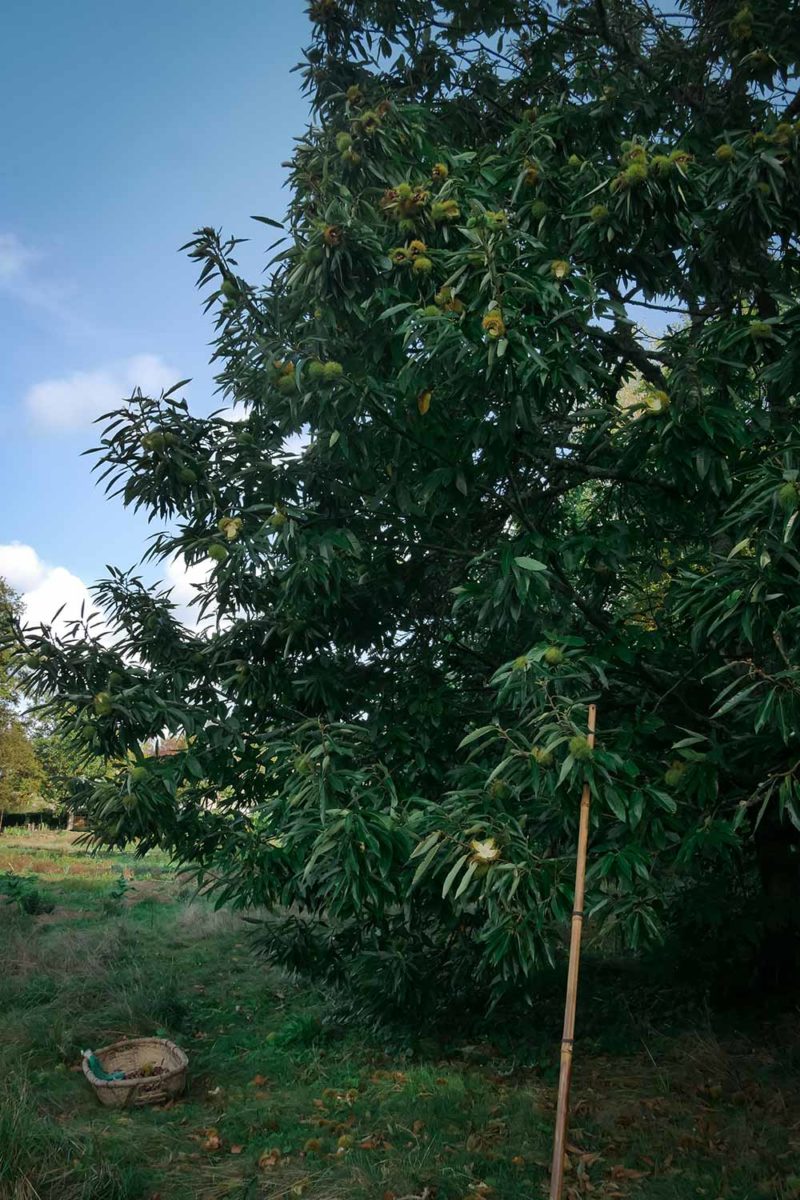
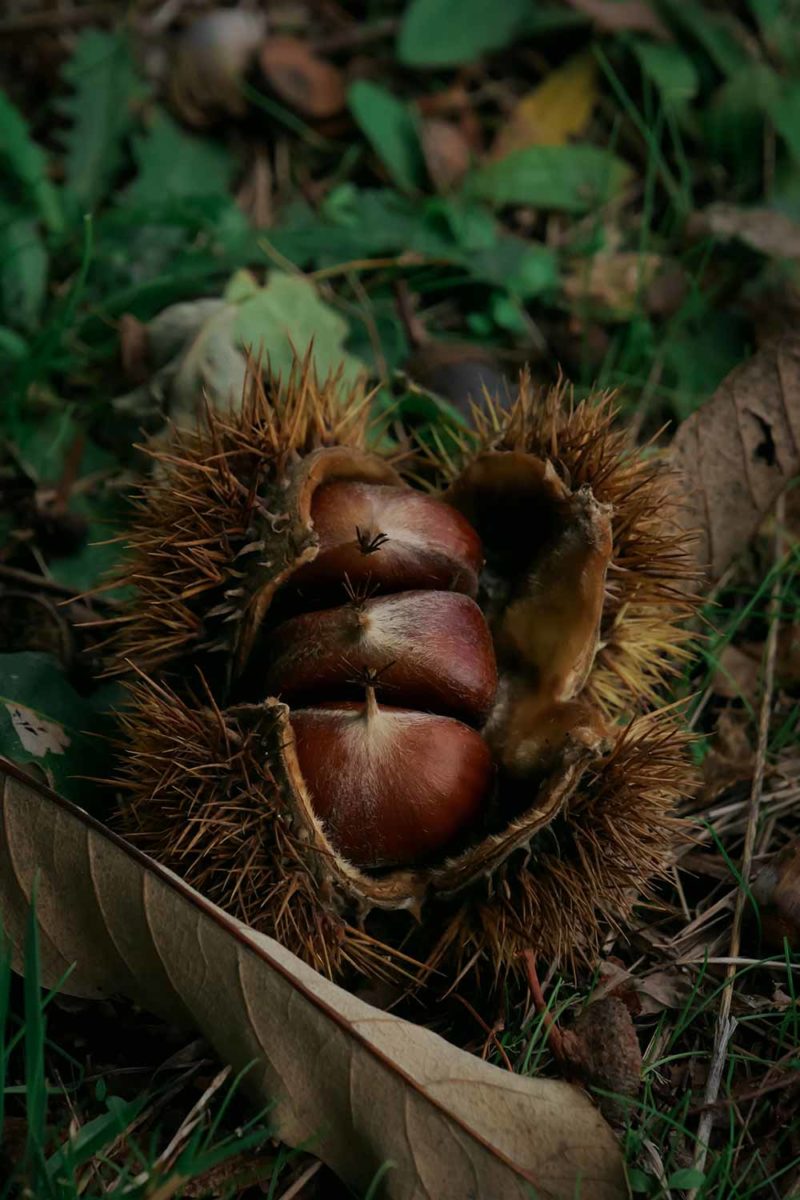
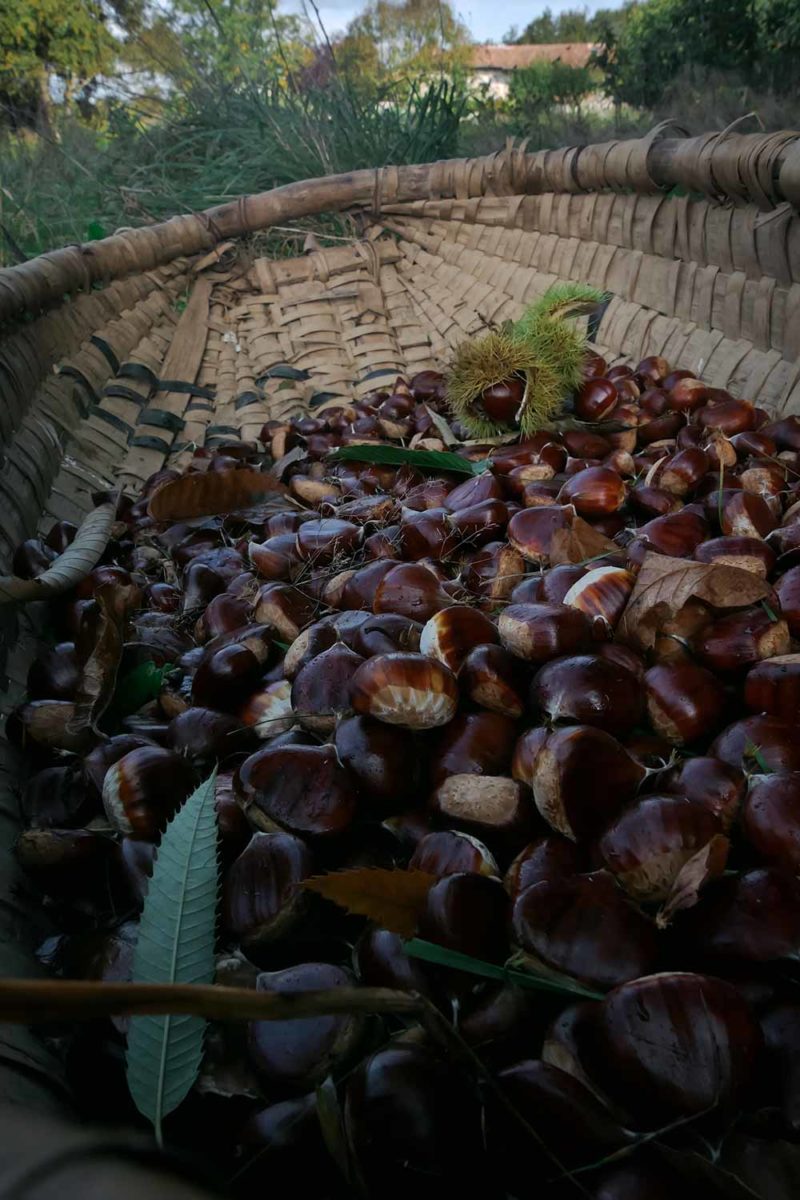
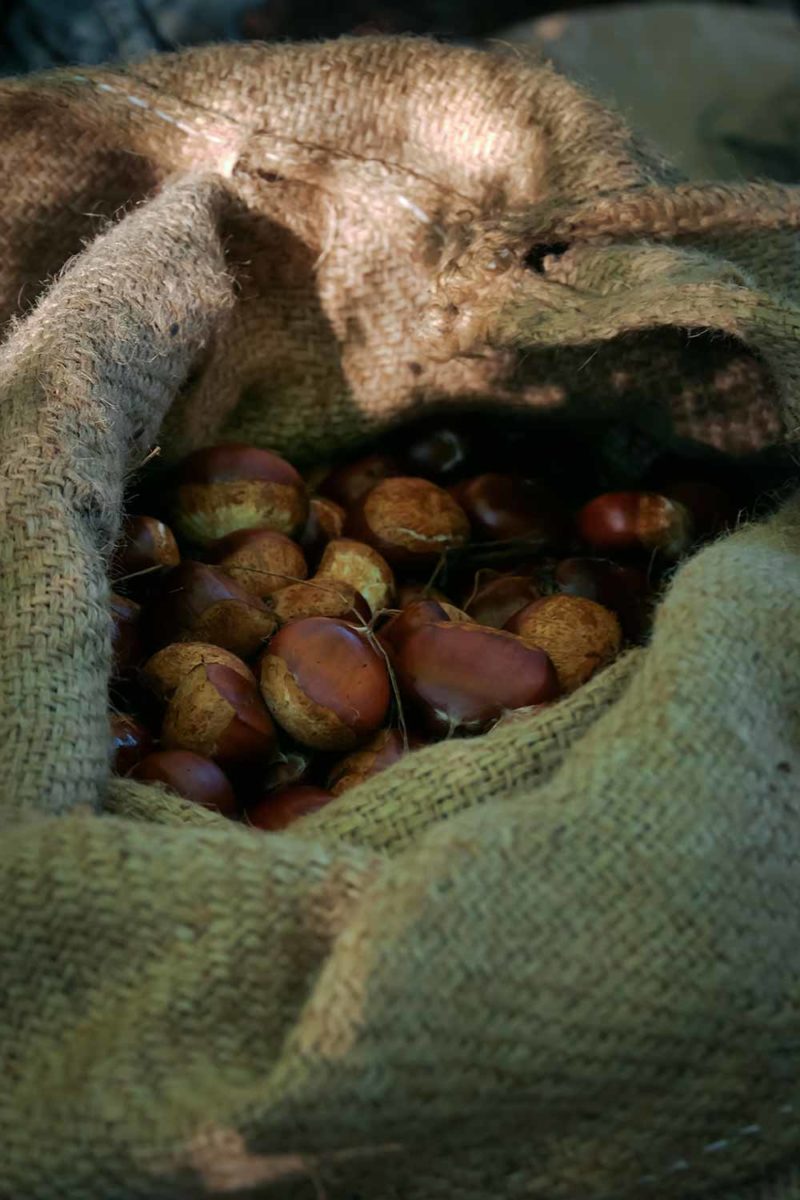
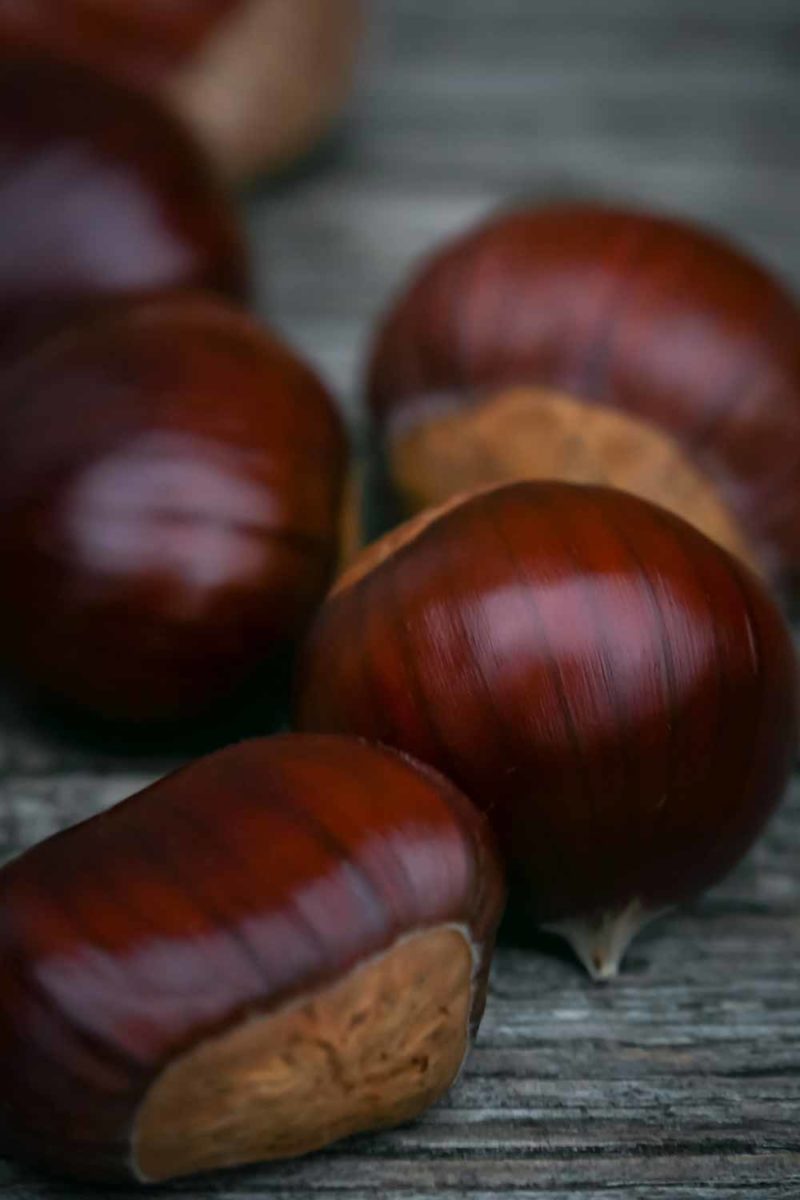
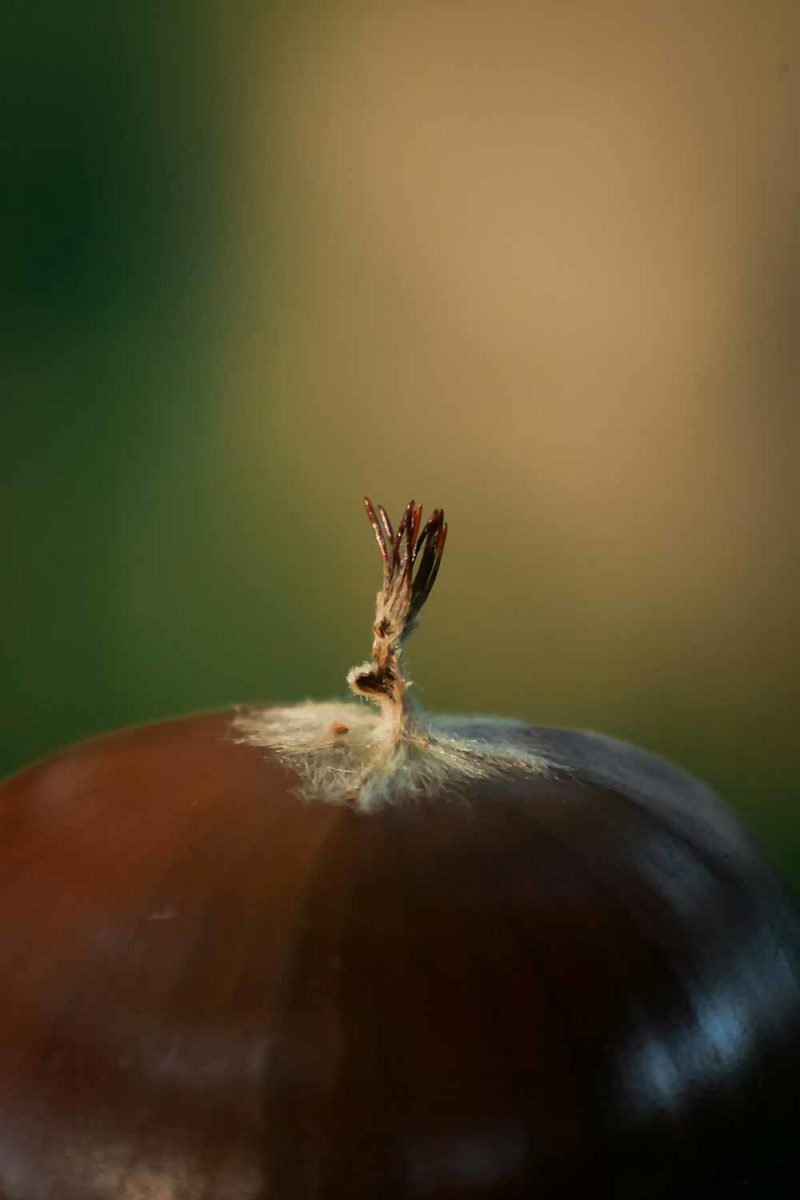
Hand harvesting of chestnuts between the chestnut trees in the garden and those in the Chalard chestnut grove.
Hand harvesting
Harvesting chestnuts is done by hand and we put on our gardening gloves to protect ourselves from thorns. But the protective tissue is not thick enough to protect our fingers and the thorns often manage to tear us up with little cries of painful surprise. Folded in half or squatting, wandering our hands between the burs, our eyes riveted on the ground, we track the slightest fruit. It is an endless job, the number of chestnuts fallen to the ground being extremely important. You have to spot the beautiful burs, open them using your foot and harvest the fruits inside by eliminating those that are too thin or crooked. Several varieties coexist here. The most common are the Marigoule, chestnuts of medium size, brown in color. Marsols come second with large, fine fruits of a light orange color with dark lines. In one corner is a tree producing Bouches de Bétizac, very large, thin, elongated fruits with very dark skin. And a few trees seem to produce other varieties that I have not identified.
We spend several days in the chestnut grove between rain and sun to fill large burlap sacks. The harvest is a bit monotonous and quite tiring. I also pick the chestnuts from the chestnut trees at the farm. The harvest is easier, the burs stinging less. But on the farm, the trees are sick and the fruit is smaller. In the evening, at the farm or at the abbey, a sample of selected chestnuts cook quietly on the fire to serve as a tasting sample. The Bouches de Bétizac are for me the most delicious. The flesh is tender with a very pleasant woody taste. Marie also prepared some very good recipes for us with chestnuts in jars from last year. Zucchini-chestnut soup, nettle-chestnut velouté, baked apples with walnuts and chestnuts…
With the bags fully filled, it is time to drop them off at the local cooperative. Each variety is weighed and inspected on the surface. Marie and Paul receive a receipt with the quantity weighed for each variety, the organic mention and the price per kilo. They will have to wait a little longer before receiving the mone. The fruits have to be processed. But this year the harvest is better than last year. The fruits are less wormy. And we sorted each variety well. Marie is happy. She thinks the pay will be better than last year. For 450kg collected, she hopes to receive around 1500 €. A large palette passes in front of my eyes. They are filled with different chestnuts. But these were harvested by machine. A big tractor passes between the trees with a sort of vacuum cleaner which sucks up burs and chestnuts. And another machine extracts the chestnuts from the burs and sorts them by varieties. Just a few hours of work to do what we did in four days. For an identical purchase price. Marie and Paul would like to be able to put in place a “hand-picked” mention in order to be paid a little better, but for the moment the negotiations have not been successful.
I continue to harvest around the farm but the harvested chestnuts are not going to be sold this time. They will serve as resources for the winter and be put in jars. Once harvested, the chestnuts are plunged into water. Those which float on the surface are unfit for consumption (contaminated with a worm or not developed enough). It will be for the hens and the sheep. Marie will then remove the shell of the healthy fruits and cook them in water so that the second skin can be easily removed. Once dry, the chestnuts can be stored in airtight jars away from light. It is also possible to reduce them to flour.
In the evening by the fire, while I watch a few chestnuts cooking on the embers, I cannot help but wonder about our relationship to the environment and to the plants that surround us. The vast majority of chestnuts that dot the Limousin soil are not picked. They line the undergrowth of the forests. They are a food resource in enormous quantities and full of healthy nutritional qualities and yet few people harvest them. It is true that the harvest is a little tiring and that the transformation requires a little time, but the interest of chestnuts in a healthy diet seems to me to be obvious. A single mature chestnut tree would be able to produce enough chestnuts to enrich a seasonal diet based on fresh and preserved foods from a family seeking food autonomy. It therefore seems important to me to know and understand the natural ecosystem in which we live in order to be able to use the resources it offers us in the best possible way.
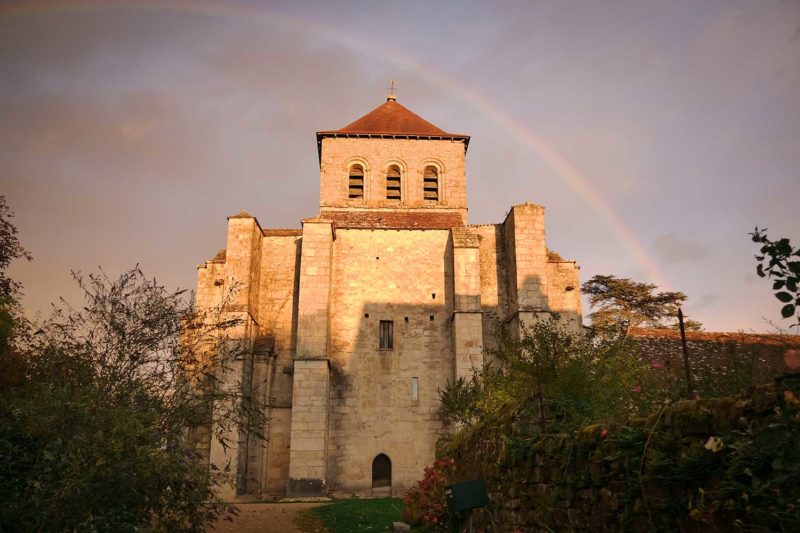
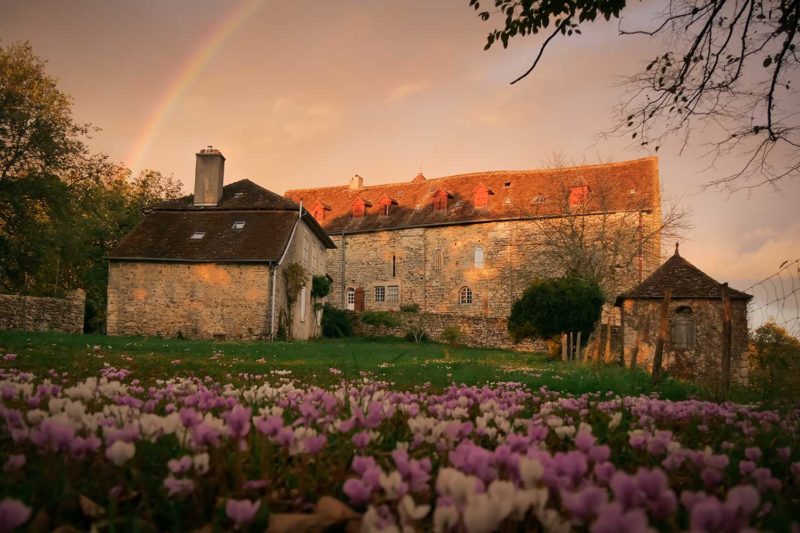
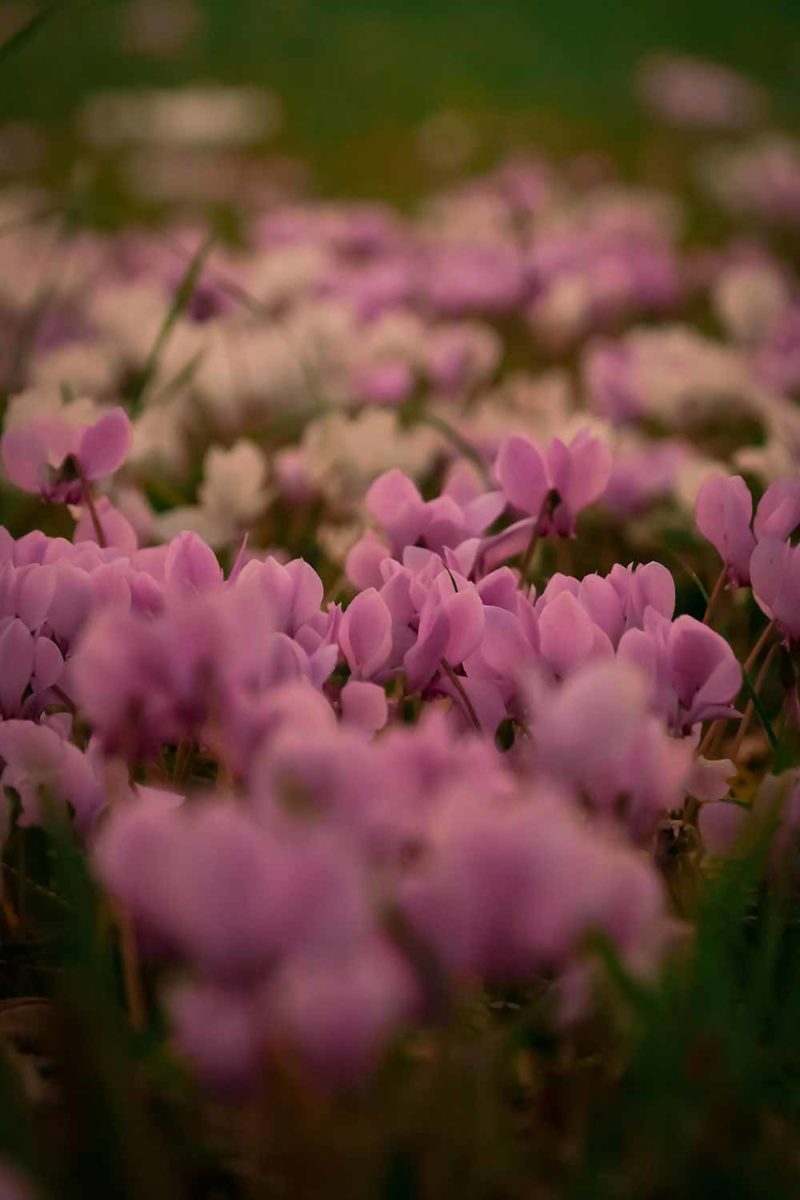
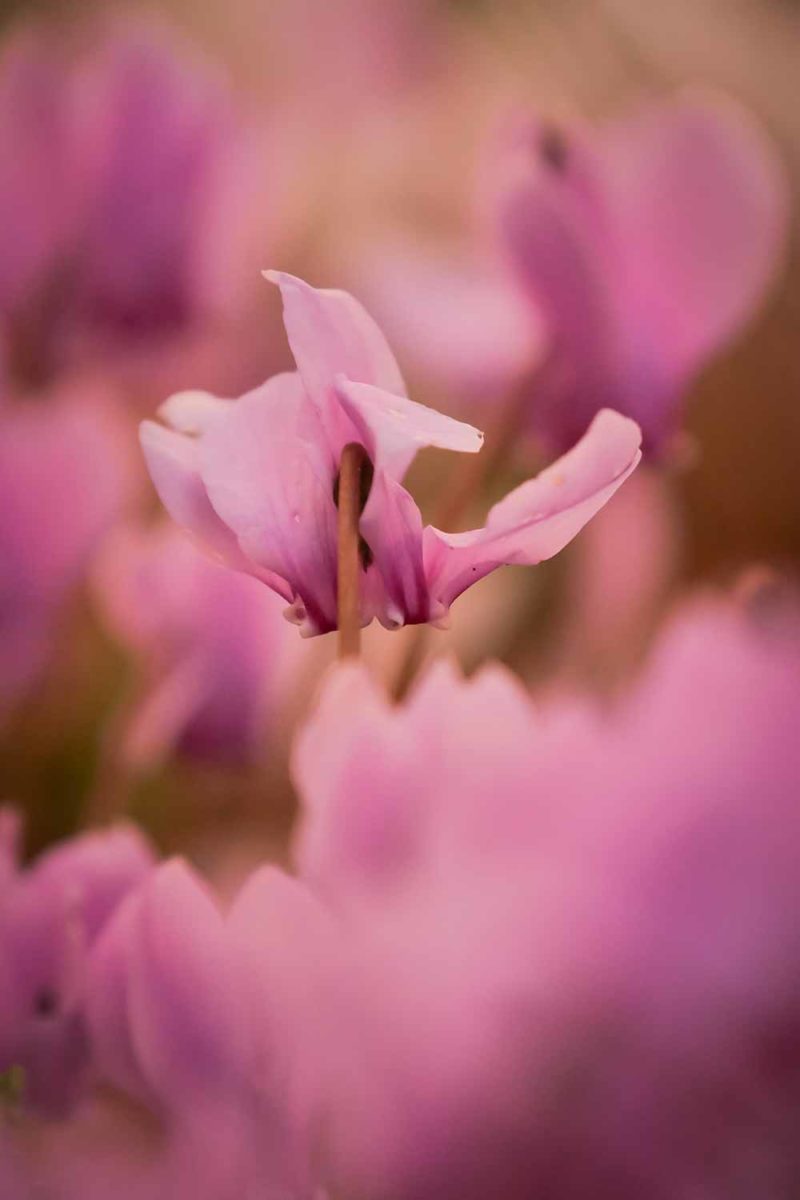
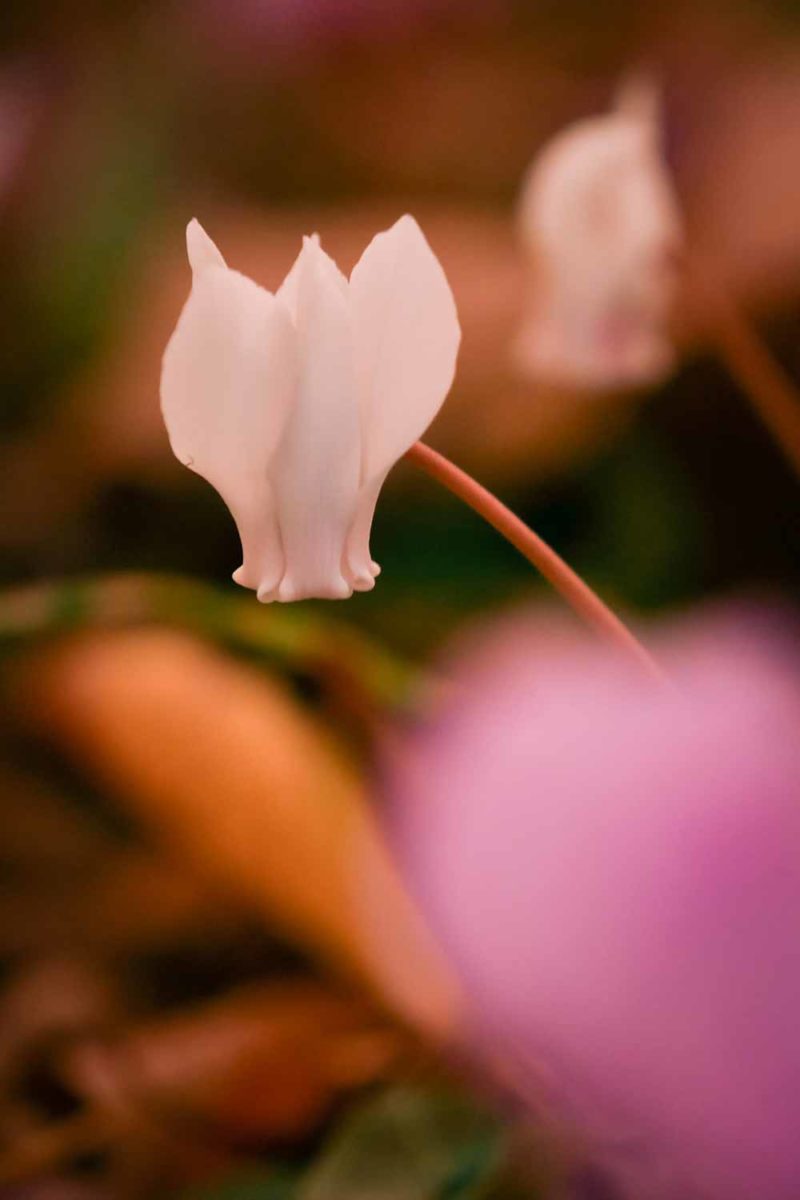
Les magnifiques prieuré et abbaye du Chalard à coté de la châtaigneraie. L’abbaye appartient à la famille de Paul. Les jardins sont habités par une multitude de superbes cyclamens roses et blancs.
To know more about : the abbey of Chalard (French)
Note: In order to respect the right to privacy and anonymity on the internet, the names of people have been changed.

We have them here in India at the foothills of the mighty Himalayas. Just wrapped up the harvest last month only. Our good mentor Karen crafted a recipe that we understand is known as creme in Europe. Nice to read about you enjoying the plucking. Do keep writing more please. Also would appreciate to receive some tweaks on what else can be made out of the nuts. Cheers!!!!
Thank you very much for your kind words ! Awesome to here that you’re doing the harvest in India too. Yes we eat “creme de marron” made of chestnuts in France. It melt in the mouth, I really like it. You can also cook the chestnuts on the fire and eat them just cooked. Or you can also mix already cooked chestnuts in soup. We often mix with pumpkin or nettle. With what do you eat it in India ?